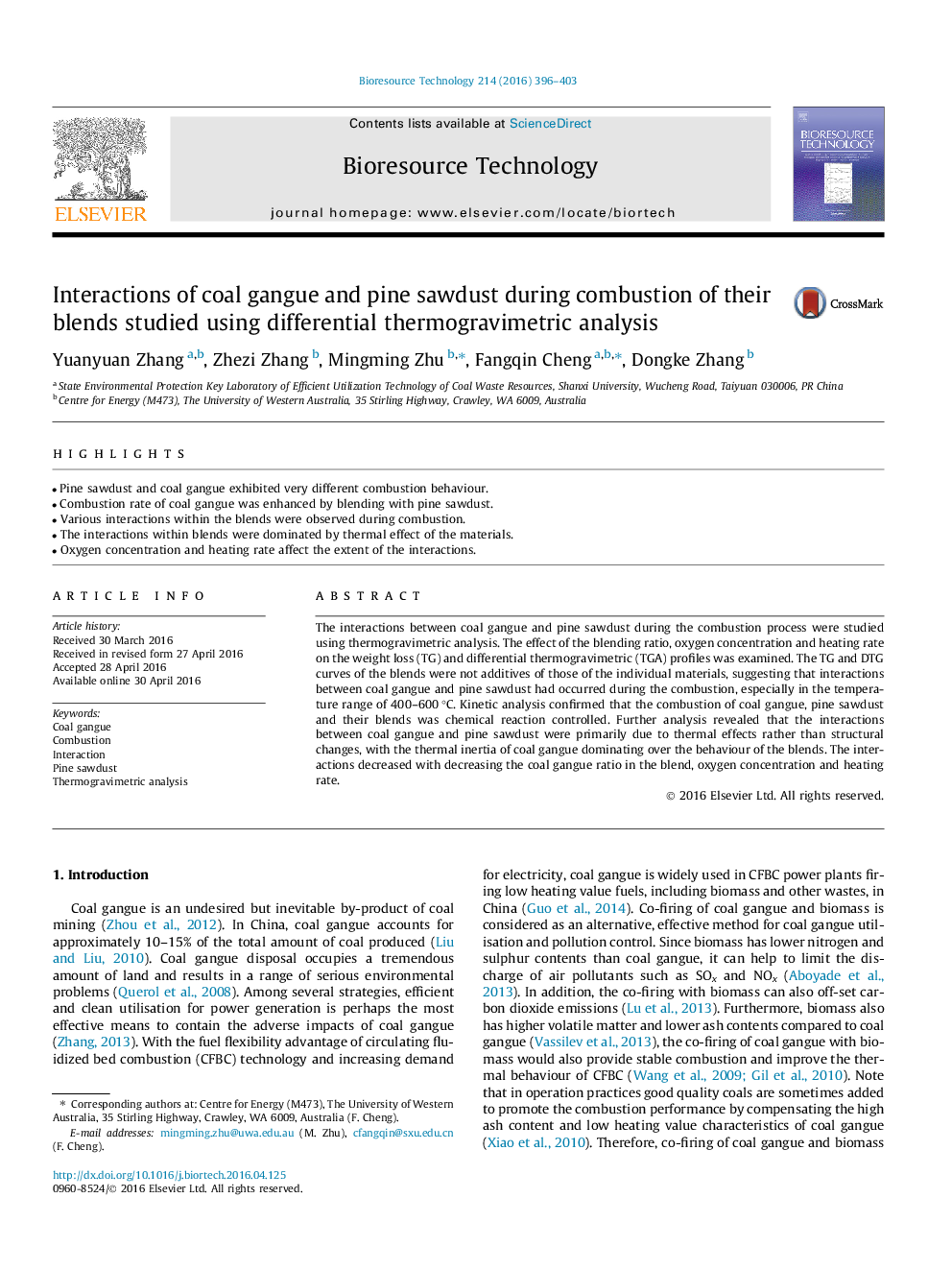| Article ID | Journal | Published Year | Pages | File Type |
|---|---|---|---|---|
| 679120 | Bioresource Technology | 2016 | 8 Pages |
•Pine sawdust and coal gangue exhibited very different combustion behaviour.•Combustion rate of coal gangue was enhanced by blending with pine sawdust.•Various interactions within the blends were observed during combustion.•The interactions within blends were dominated by thermal effect of the materials.•Oxygen concentration and heating rate affect the extent of the interactions.
The interactions between coal gangue and pine sawdust during the combustion process were studied using thermogravimetric analysis. The effect of the blending ratio, oxygen concentration and heating rate on the weight loss (TG) and differential thermogravimetric (TGA) profiles was examined. The TG and DTG curves of the blends were not additives of those of the individual materials, suggesting that interactions between coal gangue and pine sawdust had occurred during the combustion, especially in the temperature range of 400–600 °C. Kinetic analysis confirmed that the combustion of coal gangue, pine sawdust and their blends was chemical reaction controlled. Further analysis revealed that the interactions between coal gangue and pine sawdust were primarily due to thermal effects rather than structural changes, with the thermal inertia of coal gangue dominating over the behaviour of the blends. The interactions decreased with decreasing the coal gangue ratio in the blend, oxygen concentration and heating rate.
